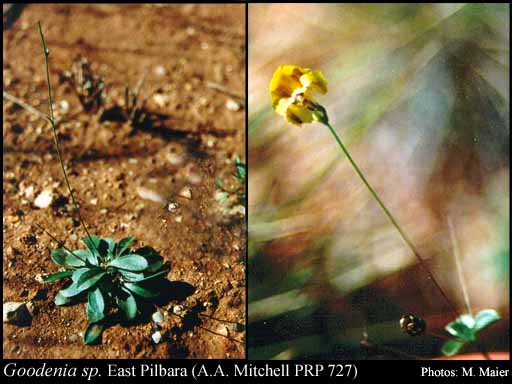- Conservation Code
- Priority Three
- Naturalised Status
- Native to Western Australia
- Name Status
- Current
Open, erect annual or biennial, herb, to 0.2 m high. Fl. yellow. Red-brown clay soil, calcrete pebbles. Low undulating plain, swampy plains.

Scientific Description
Stems unribbed. Leaves flat, 15-45 mm long, 7-11 mm wide, Indumentum present, with sparse, simple hairs, not papillate; margins entire. Pedicel pedicellate, Pedicel length the pedicels 4.5 mm long, Indumentum present, Hair type with simple hairs. Calyx lobes present, Calyx length 4-4.5 mm long, hairy, with dense, simple hairs. Corolla yellow, 14-14.5 mm long, without auricles, not spurred, hairy on the outside, with dense, simple hairs, glabrous on the inside; central lobes 6-7 mm long, with wings; outer lobes 7-8.5 mm long, wing present on both sides and clearly unequal, 1.2 mm wide on the narrower side, 1.5 mm wide on the broader side. Anthers free. Ovary inferior, not gibbose; style 8-8.5 mm long, glabrous; indusium single, hairy; ovules more than two. Flowers in February, March and May. Occurs in the Pilbara (PIL) and Gascoyne (GAS) IBRA Region(s), of the Eremaean (E) Botanical Province. Conservation Code: Conservation code Priority Three (P3).
Distribution
- IBRA Regions
- Gascoyne, Pilbara.
- IBRA Subregions
- Augustus, Chichester, Fortescue, Hamersley.
- Local Government Areas (LGAs)
- Ashburton, East Pilbara, Meekatharra.